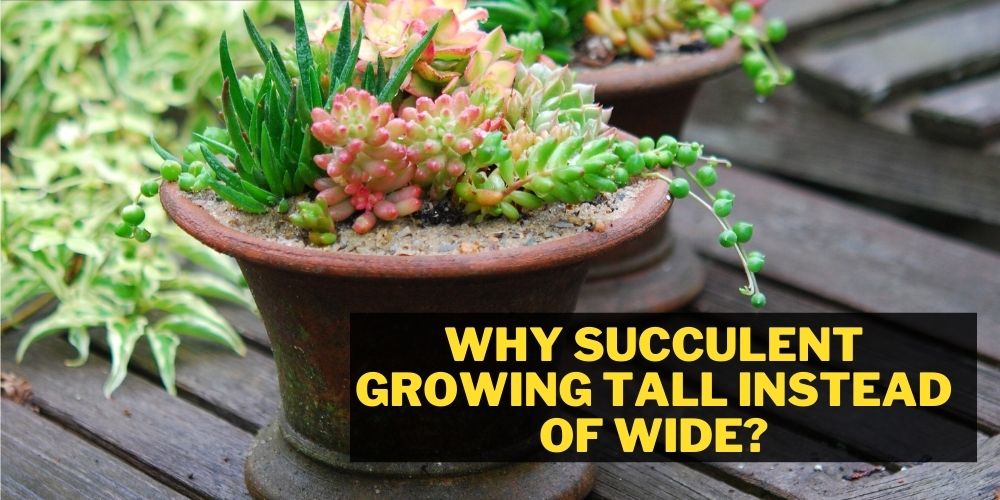Orchids bring beauty to any setting, but confusion often arises about their classification. People frequently ask, “Are orchids succulents?” This article sets out to clarify this question.
We will look at the features that define succulents and compare them to orchids. Through this comparison, we aim to give a straightforward answer to “Are orchids succulents?” and expand your understanding of these fascinating plants.

Table of Contents
Are Orchids Succulents? (An Accurate answer)
Orchids are not succulents. They share similar attributes to those of a succulent plant, but they are not derived from the same family. Orchids belong to the Orchidaceae family.
Succulents, on the other hand, are part of the Cactaceae family. The Cactaceae family is also home to a wide range of cacti species.
The largest succulent families are the Cactaceae (cactus family) and the Aizoaceae (also known as the Mesembryanthemaceae. The latter is also known as the ice plant family. Each of these 2 succulent family species contains a whopping 2000 different species.
Together they total around 40-45% of the total species of succulent plants. Orchids also have similar characteristics to some species of cactus. This is why the orchid is intriguing and somewhat confusing.
How do you tell if a plant is succulent?
You can identify a succulent plant by noting some key traits.
First, look for plump, fleshy parts. These are filled with water. Leaves, stems, or roots can be fleshy in succulents.
Second, notice the plant’s color. Many succulents show unique hues, like purple, red, or blue-green.
Third, check for a waxy or fuzzy coating. This coating helps succulents save water.
Lastly, consider the plant’s native climate. Most succulents love dry, sunny places.
Knowing this, you’ll easily spot a succulent.

What is an orchid?
Orchids are a diverse group of flowering plants belonging to the Orchidaceae family. With over 25,000 species and 100,000 hybrids, they are among the largest families of flowering plants. Orchids can be found in various habitats, from tropical rainforests and mountains to grasslands and deserts.
These plants are known for their beautiful, unique, and fragrant flowers. They have three petals and three sepals, with the middle petal, called the lip or labellum, often being larger, colorful, and distinctive.
Orchids are classified as either epiphytic or terrestrial. Epiphytic orchids grow on other plants, using their roots to cling and absorb water and nutrients from the air. Terrestrial orchids grow in soil, drawing nutrients from the ground.
In general, orchids are not succulents, as they do not have the thick, fleshy leaves or stems commonly associated with water-storing succulent plants. However, they are adaptive and resilient, with their own unique ways of coping with different environmental conditions.
You may also find useful: Do Orchids Like Acidic Soil?
What are species of orchids that can be considered succulents?
Some species of orchids have extremely similar characteristics to a succulent plant. So similar that they are often confused with and can be considered one.
These species are:
ACAMPE
There are 8 known species of this plant. The Acampe orchid is native to the eastern Himalayas. It can also be found in regions that stretch from tropical Southern Asia, India, Southern China, Malaysia, and the Philippines, as well as tropical Africa, Madagascar and various islands of the Indian Ocean.
They produce beautiful small/medium-sized yellow flowers that can be covered with either orange, red or brown stripes, depending on the species. Another standout visual feature is their thick, leathery, distichous leaves. They have an ear-shaped white lip which can either be sac-shaped or contain a spur.

They also have distinct red markings at their base. They grow on medium-sized vines that can sprout everywhere within their root area, forming huge amounts of foliage. Due to this fact, they are rarely cultivated.
VANILLA
This species of orchid originally calls areas of Mexico and Belize it’s home. It is cultivated and harvested primarily in Veracruz, Mexico, Tahiti, Indonesia, and Madagascar. It is known for what we take for granted when we consume anything that contains vanilla as a flavor. Yes, you heard right. It is one of the primary sources that is used to make vanilla flavoring.
Not to be confused with that which is produced by beaver butts. That’s a story for another day, though… The vanilla orchid must be hand-pollinated to be able to produce any fruit.

Those grown in the wild have a 1% chance of fruition due to natural processes not allowing pollination. The flowers are a greenish-yellow color. The fruits resemble long banana-shaped pods.
CALANTHE
The Calanthe orchid is a hardy plant that is quite adaptable to colder growing conditions, providing mulch. They are distributed from Tropical and subtropical Asia, Africa and Australia to Mexico southward to Colombia and the Caribbean. There are 5 main species of this type of orchid, but it can also be broken down into upto 200 sub-species.
They grow in somewhat of a clumping formation, usually around 4-5 stems that can bear upto 25 wonderfully scented flowers. Their feature is the beautiful pale lila-colored petals surrounding a long purple/violet lip.

LIPARIS
The Liparis orchid also goes by wide lip orchids or sphinx orchids. They are small to medium-sized species with yellow to yellow-green or purplish sepals and petals fan outwards. This type of species’ lip is lobe shaped and usually larger than its sepals and petals.
Their leaves are often egg-shaped and thin and leathery, with a distinct pleating characteristic. The Liparis can be found on every continent besides Antarctica.

They are found in larger spawn areas within tropical Asia, subtropical and tropical parts of the Americas, Africa, New Guinea and Australia.
It has been noted that sixty three species alone can be found in China. Additionally, twenty are endemic to just China, two in the Northern half of the USA and one in Europe.
ANSELLIA
The Ansellia orchid comes from the Tropical and South African regions. They are also known as the leopard orchid or giraffe orchid due to their fascinating, almost camouflage flower pattern.
They have petals that are yellow or greenish-yellow in color with lightly or heavily marked brown spots. They can be located along coasts and high up in the tree canopies where they are attached to the branches. The roots are aerial and resemble spindly white needles.

These orchids can grow huge and have been recorded to weigh up to a tonne! To demonstrate the size, some species of eagle owls have been known to create a nest inside the bulb. They can tolerate very dry weather conditions, which make them extremely close to being succulent.
OBERONIA
The Oberonia or ‘fairy orchid’ isn’t as glamorous as some other known succulents emulating orchids. They don’t have those vibrant colors or ‘look at me’ characteristics.
Oberonia a marvel to admire its cute orange/yellow fairy-like flowers arranged on a longish green stem. Their leaves are a fascinating fan-like arrangement within two overlapping rows near the base before spreading outwards.
They are native to the tropical regions of Africa and southern Asia ( India, China, Japan, Indochina, Indonesia and the Philippines). They can also be found in Australia and various other Pacific and Indian Oceans islands.

EULOPHIA
Eulophia can usually be found in regions of Africa and Asia; they grow in shady areas alongside grass or shrubs within forests. Most species of this plant don’t have any leaves. The ones that do, though, are usually long, narrow, or even pleated.
This type of orchid can come in an array of different colors, from variants of yellows to pinks and whites. When in full bloom, they can almost be described as looking like an animal paw.
With 3 claws fanning out above a padded paw. Most species of Eulophia can be found in the shady rainforest, open scrub, or woodland areas.

They have also been spotted in the tropics and subtropics of Africa, India, Asia, Queensland, and the Americas, but most can be found in Africa. Some species can adapt to extremely dry environments and are among the very few orchid species to have truly become a real desert dwelling species.
BOLUSIELLA
The Bolusiella orchid is the perfect subtle blend of flower and leaf. The stems grow out below the leaves. The flowers are white and small to mid-sized, almost resembling fury little stars snuggly layering some thick sugar pea-like leaves.
The leaves are tender and green in color. These orchids can be found in sub-Saharan Africa and the Comoro Islands.
What is called an orchid cactus? Do orchid cacti have thorns?
Funnily enough, the orchid cactus isn’t an orchid, and it’s part of the cactus and succulent family. The name cactus orchid was coined due to this plant resembling some types of orchid species. Characteristics such as growing conditions and its blooms are very similar to those of an orchid.

The orchid cactus can be found in the tropical Americas, Mexico, Central America, and even across the Caribbean. Orchid cacti do not have thorns which are quite unusual for a cactus species. It is up there with the most visually beautiful plants in this realm!
Conclusion:
It’s safe to say that orchids aren’t succulents, although they have very similar characteristics. They are often hardy and can survive in harsh environments that offer little in the way of water. Orchids are usually found in warmer, more tropical/subtropical regions such as Africa, Southern Asia and the Pacific Islands, to name a few.
They come in a range of different sizes, forms and colors. Some are more vibrant and outrageous; others are more subtle. Orchids are also used for their medicinal purposes when used in teas. It is known to assist with treating some cancer types, strengthening the immune system, and significantly improving eyesight.


